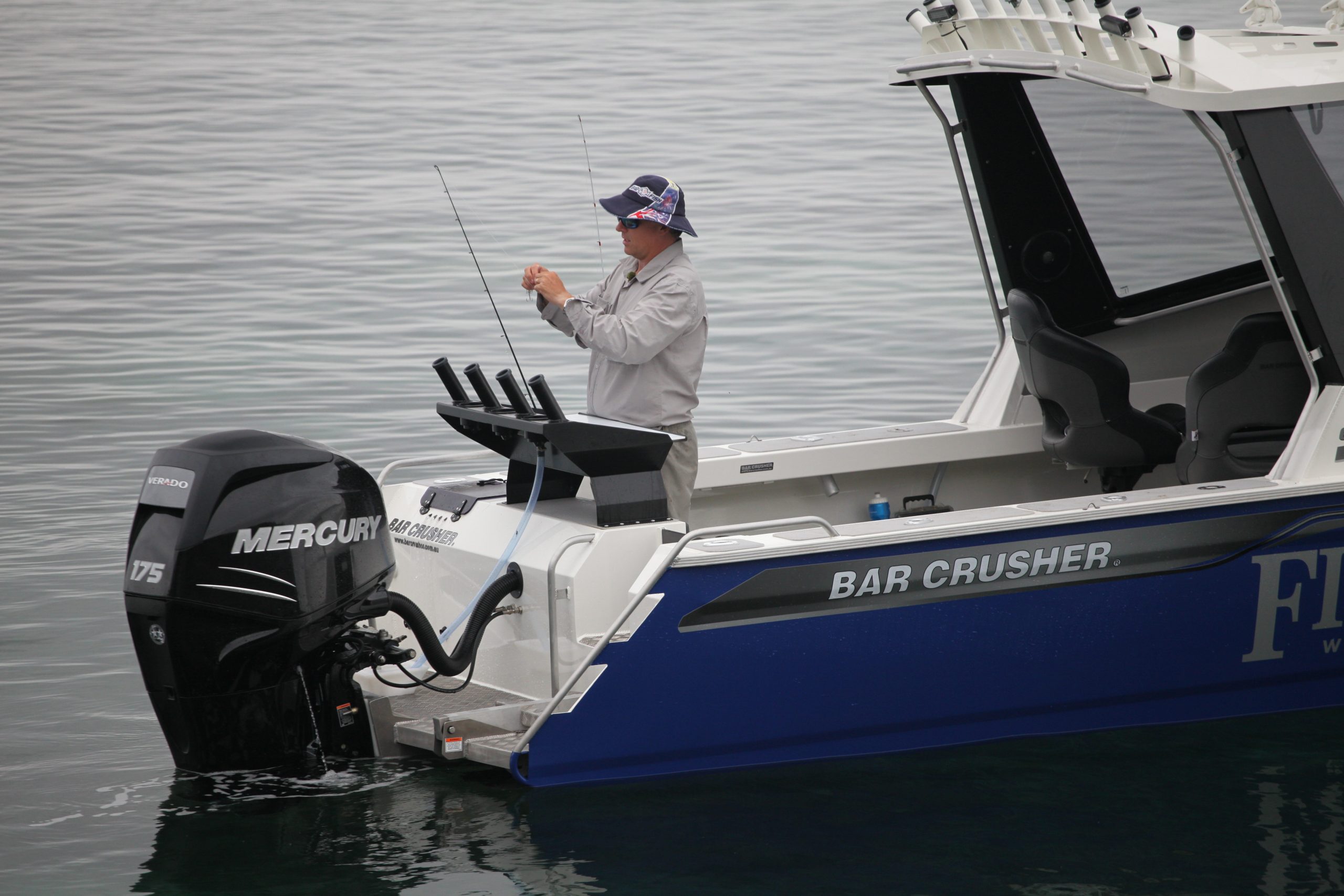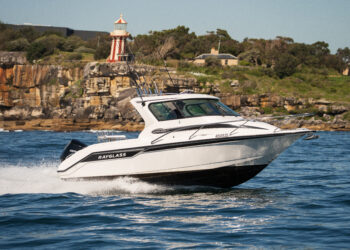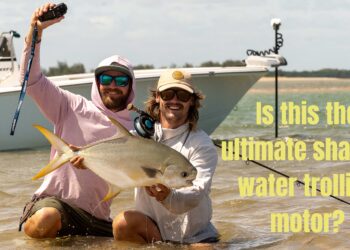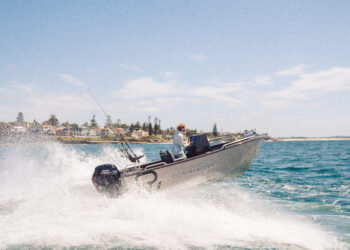
After more than 130 hours of saltwater use, Jim Harnwell assesses the performance of he 175hp Mercury FourStroke Verado bolted to the transom of the Fisho project boat.
BACK in 2010 I did an engine test on a four-cylinder (L4) Verado as part of an ambitious program which saw a range of 200hp outboards fitted to our then project boat, a Stabi-Craft 659 Super Cab.
I well remember the Verado being a standout performer, even though it was a reasonably small capacity four-cylinder engine competing against much bigger six-cylinder donks.
The 1.7l L4 Verado (which comprises 135, 150, 175 and 200hp models) achieves its power and acceleration via its revolutionary supercharger system. In very basic terms, a supercharger is an air compressor used as part of a forced induction system in an engine. The supercharger allows the engine to use more oxygen and fuel and thus create more power.
Mercury launched the FourStroke Verado platform (which also includes 2.6l six-cylinder variants now rated to an amazing 400hp) in 2004. Back then the engines were lauded as being way before their time in regards to innovation and performance. After running a 175hp Verado for more than 130 hours on our current project boat, a Bar Crusher 670HT, I can assert that nothing has changed on this front.
In my view, the Verado has been vastly underrated by most Aussie fishermen. The fact is that Mercury achieved more than a decade ago what other outboard companies are only just beginning to bring to market. In many ways, Verado started the trend towards light, powerful, efficient and technologically advanced four-stroke power.
I chose the Verado 175 for Fisho’s Bar Crusher 670HT because it offered something a bit “different”. The engine comes standard with Mercury’s excellent DTS controls and the VesselView 4 engine management system.
I opted for the Mercury electric-hydraulic power steering kit, which provides a whole new world of car-like control and ease of use. The 2.6l L6 Verados come standard with power steering.
Bar Crusher rates a 175 as being the optimum horsepower for the 670HT with 150 being minimum and 200hp maximum. At 231 kilos, the Verado sits perfectly on the Crusher’s transom. The “Darth Vader” inspired cowling, gleaming black paintwork and silver graphics contrast nicely with the Crusher’s blue and white hull.
The Verado spins a 18-inch Enertia stainless prop and pushes the Crusher to just on 40 knots at WOT. I rarely, if ever, drive that fast out at sea, spending most of the time either trolling at low revs or cruising at around 20-25 knots.
At troll speed of 8 knots at about 2000-2300rpm, the Verado uses about 9-11 lph (depending on sea conditions); at 3500-4000 rpm, the engine uses about 20-23 lph and travels at between 20-25 knots.
During a recent offshore mission targeting southern bluefin tuna off the NSW South Coast, we covered a total distance of 176.2 kms achieving an average of 1.02 kms per litre of fuel. This trip involved some hours of trolling as well as cruising speed runs out and back (we ended up 45nm east of JB!) plus a 15nm run in the middle of the day after a mate radioed and gave us some marks where he’d found albacore schooled up on a current break. As was typical this season, the SBT proved elusive … Luckily, we ended up with some tasty albies and the weather and sea conditions were fantastic.
The Crusher holds 190l of fuel and I had an extra 50l on board so this sort of run represents the limits of what is safe and practical in a 6.7m boat. It was, however, an excellent test of the engine’s overall efficiency. We did at least 100km running out and back, plus moving position to find the fish, as well as 4-5 hours of trolling, so using just under 180l of fuel all up indicates that the Verado provides plenty of range.
Based on the fuel data gathered on our epic mission fruitlessly chasing SBT, a typical day targeting marlin or yellowfin tuna (or SBT when they come in close enough) should use about 100l of fuel – which is not too bad when the fuel costs are split between three or four crew. That said, it’s good to know that you have enough juice on board to head out wider if necessary or if the wind gets up and you are forced to slowly punch back in. The VesselView screen which connects to the Verado’s ECM provides highly detailed fuel use data, making it easy to work out how much you’re using and how much you’ve got left. Take it from me, it’s good to know the fuel situation when you’re out so far that the land is just a thin brown smudge on the horizon …
Performance
The Verado pushes the Bar Crusher along extremely well. Thanks to the supercharger, this relatively small engine gets the plate alloy hull up and on the plane with no stress. At no stage throughout the rev range does the engine feel that is labouring or struggling to keep the boat on the plane. Even when motoring along at mid revs, pushing the throttle down sees an immediate response from the engine.
The whole idea behind Verado was to give four-stroke outboards a much-needed performance boost. Prior to 2004, four-strokes were praised for their quietness, reliability and fuel efficiency. But they were widely regarded as being heavy and sluggish, especially in regards to getting out of the hole. The L4 Verado changed all that by producing a relatively small, light engine that boasted plenty of get-up-and-go via its supercharged technology.
When Verado was first launched I remember asking the local Mercury technicians about any possible servicing or maintenance issues. After all, a supercharged marine engine sounds like it’s inherently complicated, right? Well, not really. Back in 2004 the Merc techs advised that the belt driving the supercharger was “super reliable and inexpensive to replace”, adding that the timing chain is 100 per cent service free for the life of the engine and the valves are non-adjustable and also require no servicing.
Verados have been in production for 11 years now – and superchargers have been around since at least the 1930s – so you’d think the technology underpinning the engine can be considered as “proven”.
Like all four-strokes, the Verado is very quiet, even at higher revs. You can easily have a conversation in the cabin while travelling along at 25-30 knots. I haven’t noticed any exhaust smoke or smells, even when trolling with the wind. The “fly by wire” digital controls and optional electric-hydraulic steering are fantastic – it would be very hard to go back to a “standard” boat after enjoying this technology. That said, the steering pump makes a somewhat annoying whining noise. This is only noticeable at low revs and could well be negated if mounted in a different style of boat.
At the time of writing, I’ve got 136 hours on the 175 Verado and it hasn’t missed a beat. I got the initial service at 20 hours and the 100-hour one at about 98 hours. I watched the technician do the 100-hour service and noted zero corrosion anywhere on or in the engine.
I’m looking forward to racking up a lot more hours on this impressive and highly innovative engine – so far it’s proven to be a real beauty!





















